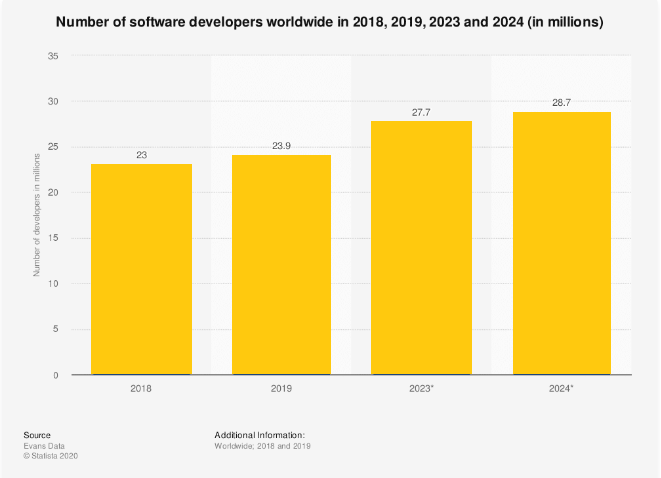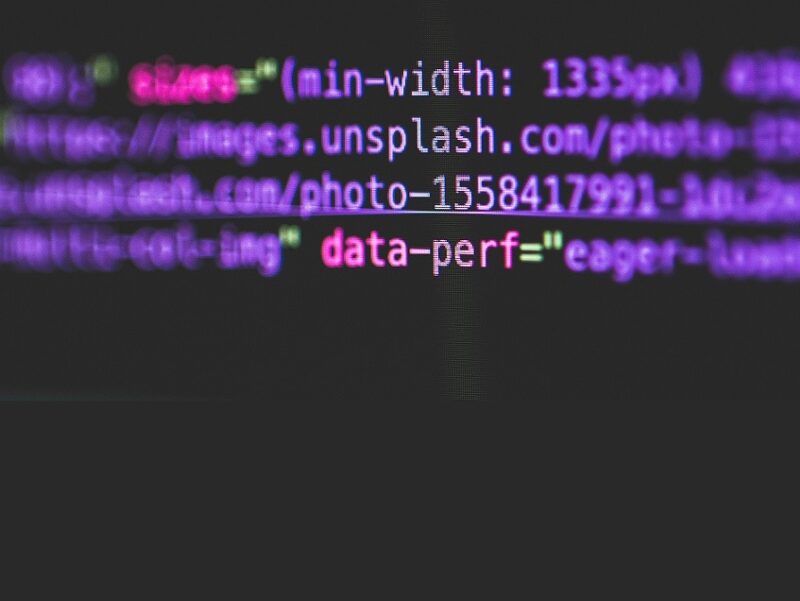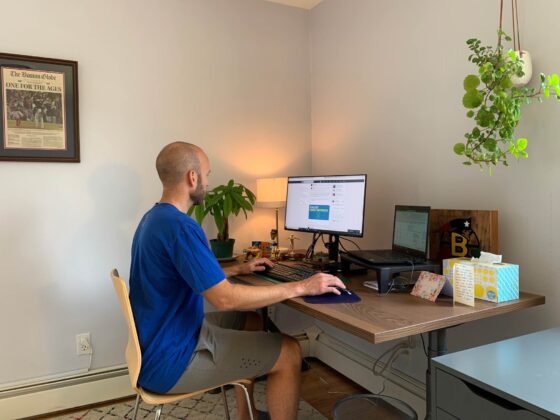HTML, aka HyperText Markup Language, is the most common form of coding in today’s online world. Invented by Tim Berners-Lee and first appearing in 1993, it wasn’t that popular until 1999, when it became a standard for web development, and it gained a new lease of life in 2012 when updated into HTML5.
Long story short, HTML is an official Internet language: 94.6% of all websites stand on it, and it powers tons of modern apps and software.
Wanna learn it? First, let’s find out if HTML is exactly what you need to reach your career goals:
What coding language is best for you?
We crafted this test to help learners find the right programming language. Just pick your own goals and preferences.
Best part? The test will take under a minute only!
Learning HTML opens countless opportunities for your tech career and business. You’ll understand how to code websites, adjust scripts, and present web information — texts, images, videos, etc. — to users. But before you jump into learning, ensure you know the following details about HTML.
HTML goes hand in hand with CSS
HTML is the first tiny step you take toward the knowledge of web development. While it is possible to use it on its own, you’ll hardly find a specialist who operates on nothing but HTML only. The reason is HTML’s limited functions:
This language is about creating a general layout of a webpage. If you plan to customize it further, personalize it, and style the content the way you want, a different language — CSS (Cascading Style Sheets) — is what you need. That’s why everyone recommends learning HTML and CSS together: While the former allows the basic formatting like adding texts, graphs, tables, images, or videos, the latter helps change fonts, colors, and positions of all those elements within a web page.
You need HTML even if you aren’t a coder
HTML is not for web developers and UX designers only. Anyone who works with digital content should learn HTML (or, at least, its basics) to benefit in the field.
Consider learning HTML if you’re a content manager, web writer, marketer, customer service representative, or blog owner. While content management systems like WordPress or Wix make it possible to manage a website without coding knowledge, it will come in handy to understand how to format a simple page or make small changes to it.
You won’t have to hire/ask a professional developer each time you need to publish an article on your website or add/remove page elements. HTML is your flexibility in content formatting, and it will save you time and money on working with coders.
HTML is not that simple and fast to master
A common misconception about HTML is that it’s easy and fast to learn. Well, it can be so if your plan is to cover basic elements and tags for slight formatting of your web pages. But if you want to master HTML and be able to work with complex structures of web pages and applications, get ready to spend much time and energy on it.
Think of HTML as learning a new language: First, you’ll need to understand the core principles of its structure, but the more you’ll learn, the more you’ll dive in and discover new “words,” rules, and components.
If you already have some tech knowledge, it can take a few weeks to learn the basics. You can also master HTML alongside other languages like CSS or JavaScript within 6-12 months if learning full-stack web development in immersive coding bootcamps. One way or another, get ready to spend months or even years to get everything a specialist should know about HTML for fulfilled work with it.
HTML forms the basis of software development
Knowing HTML doesn’t make you a developer, but it’s what you need to start with if planning to continue your career in programming. Together with CSS and JavaScript, HTML forms the basis of front-end development: HTML-based coding frameworks are what a developer should master as they will need them to code every part of a website.
With an HTML skillset, you can then continue mastering the niche of front-end development (coding the parts of a website users interact with), back-end development (coding CMS), and full-stack development (coding both front-end and back-end parts of a website).
Given the growing need for software developers on the market, it’s worth starting with HTML if you want to join it.

HTML is not a programming language
It’s a markup language, a form of coding but not programming per se. So, if you think that it’s enough to learn HTML to become a programmer, think again: It’s a great introductory skill to master before diving into the world of full-featured programming languages used for dynamic website building.
Complement your HTML skills with CSS and JavaScript if planning a career in web (front-end) development. For those thinking of full-stack development, continue your HTML learning with frameworks like Bootstrap or Node.js and programming languages like SQL or Python.









